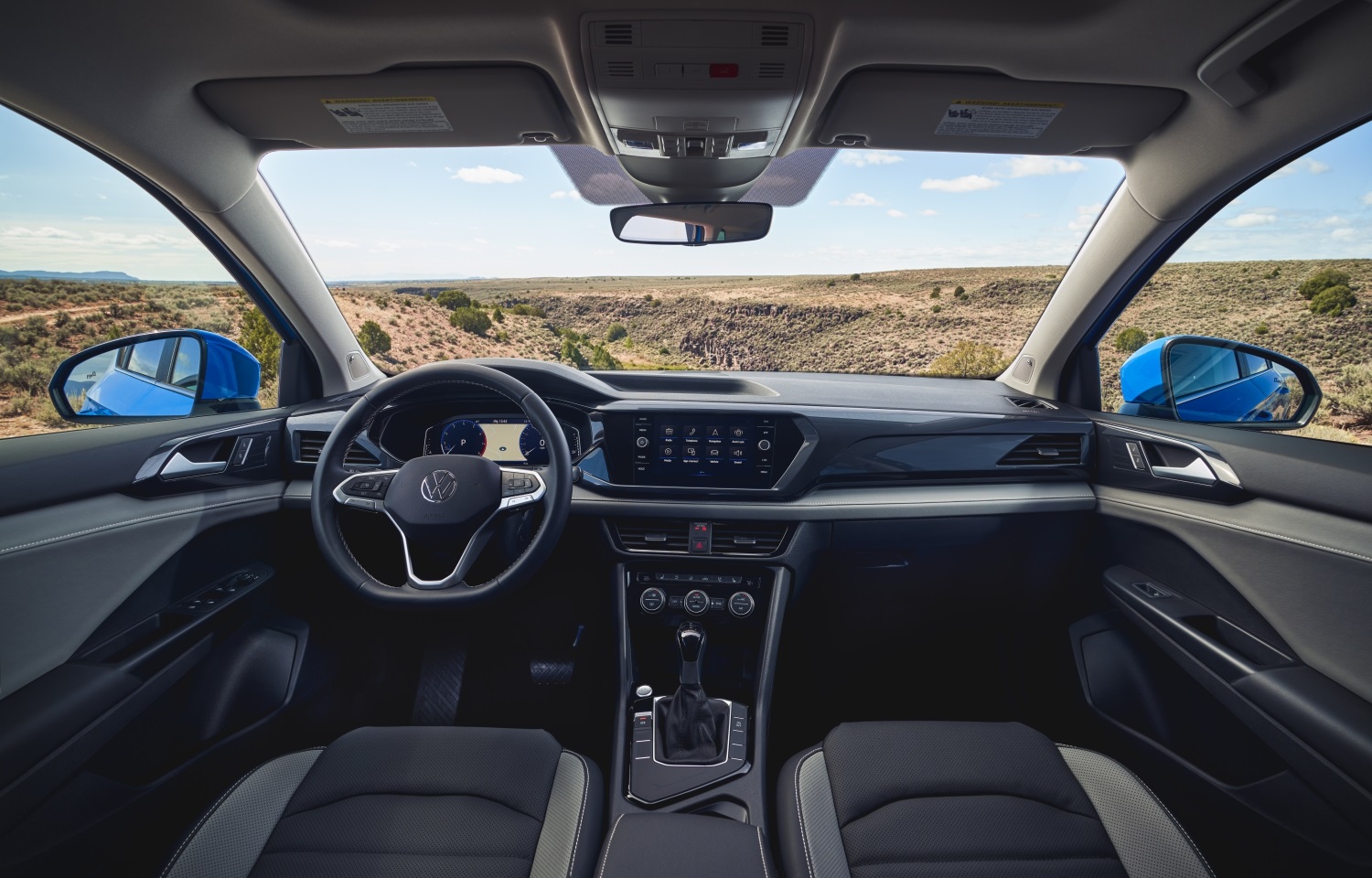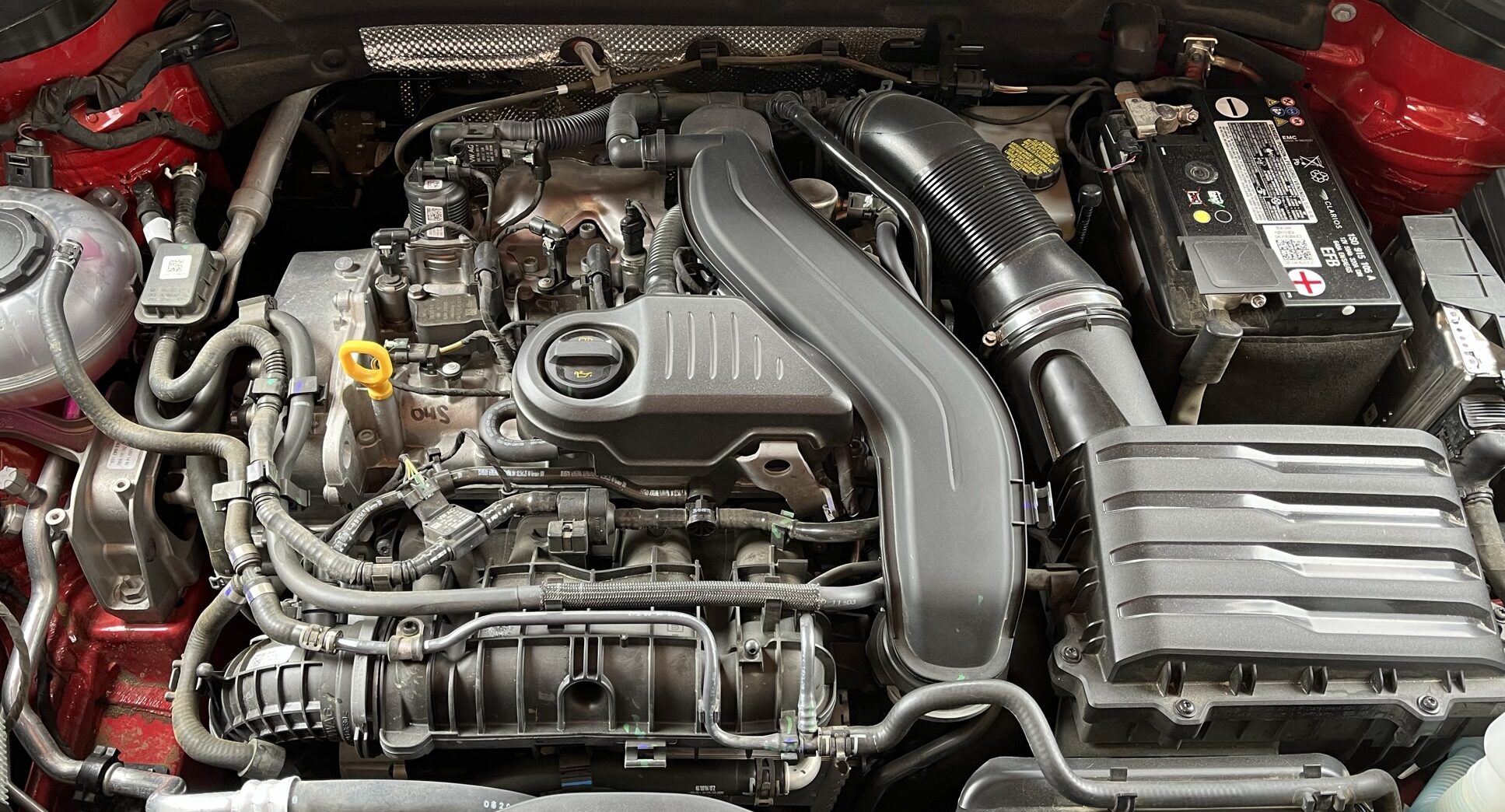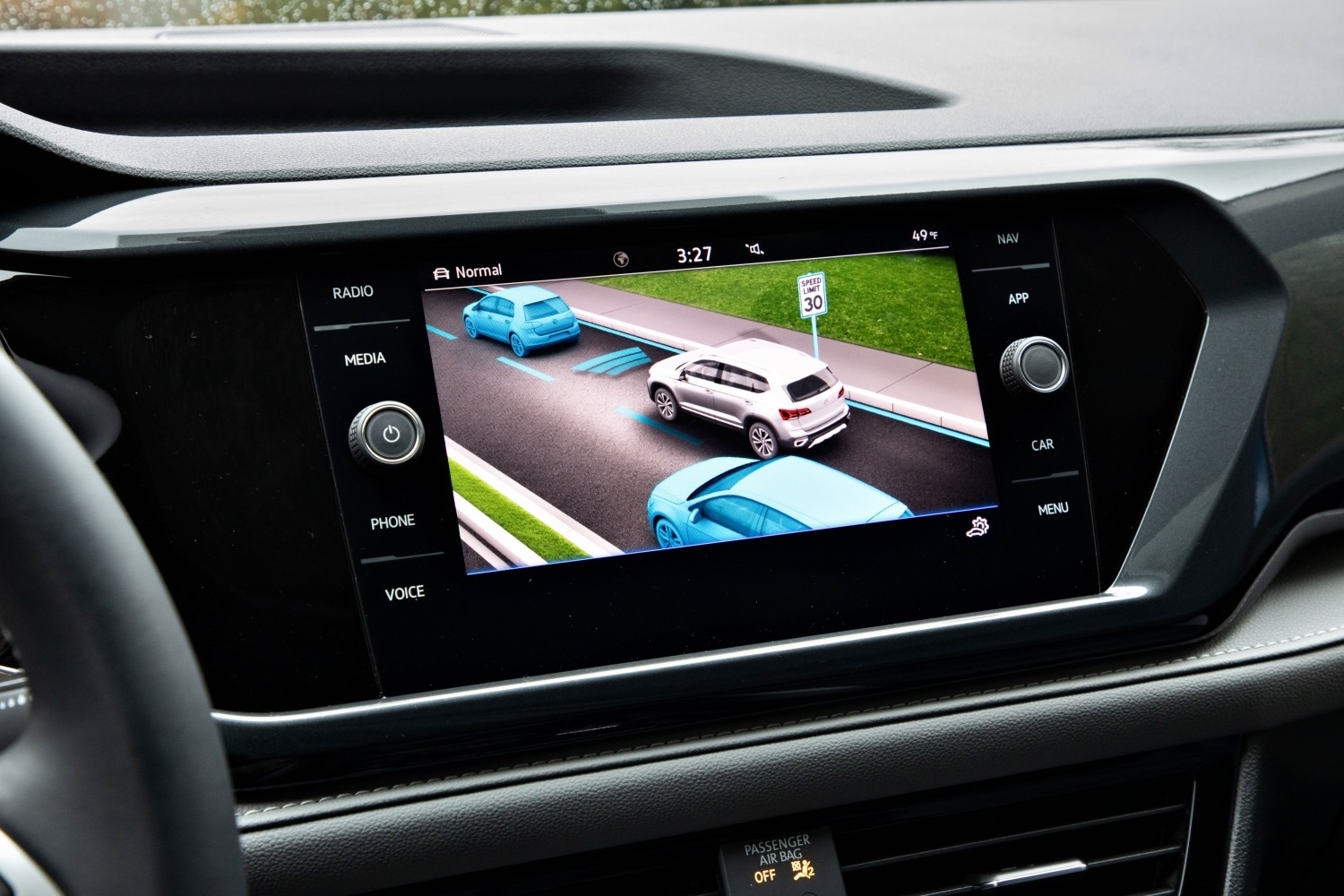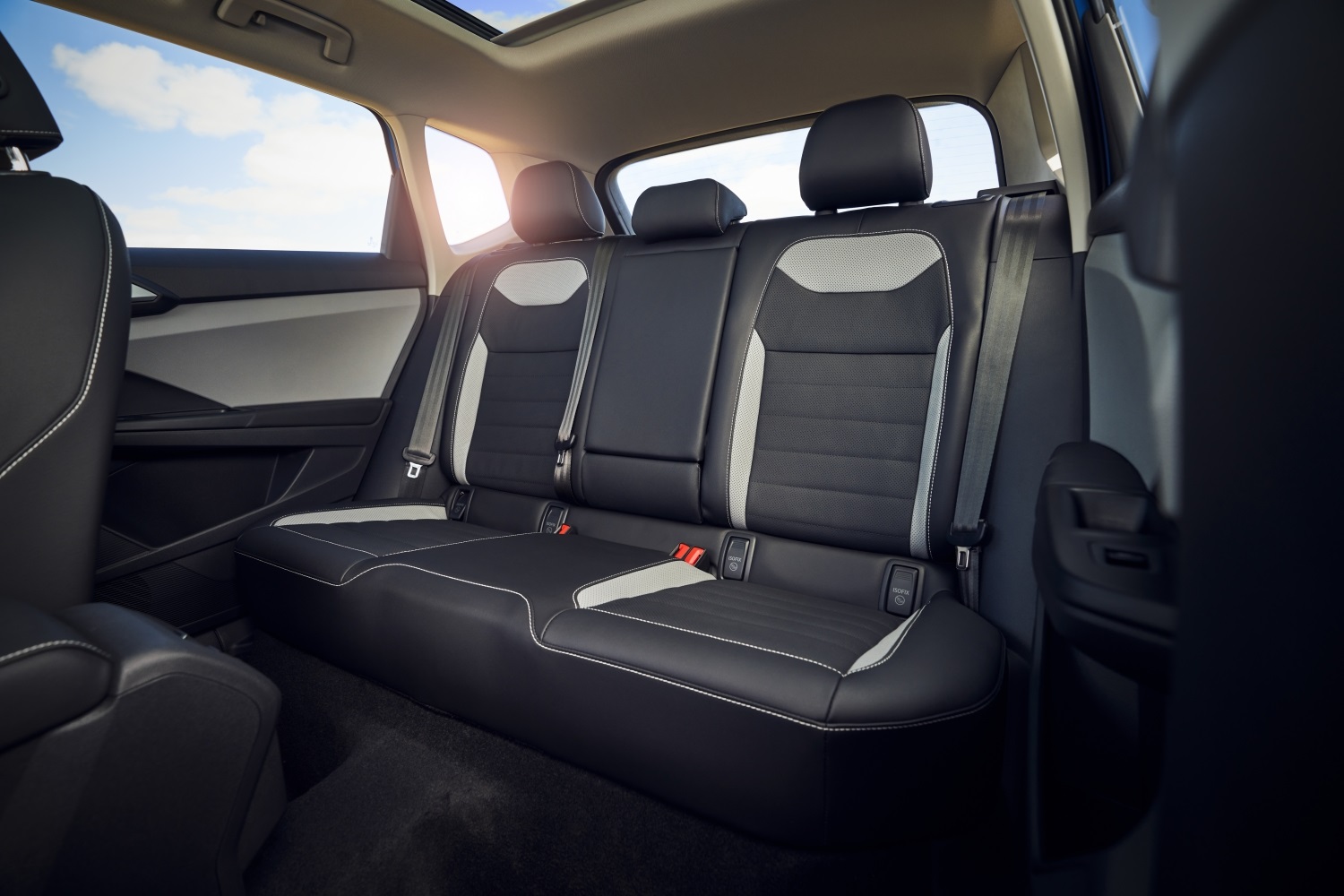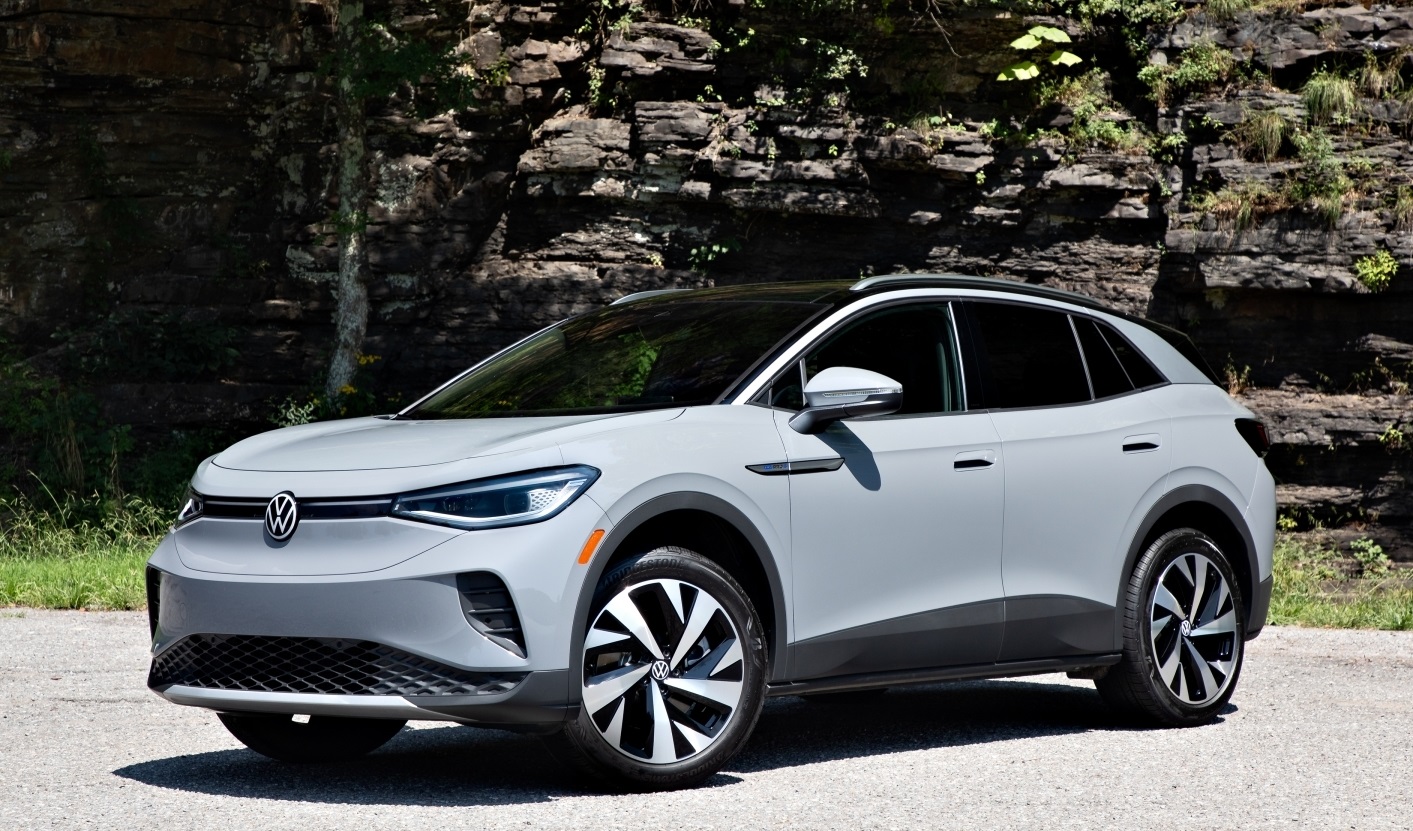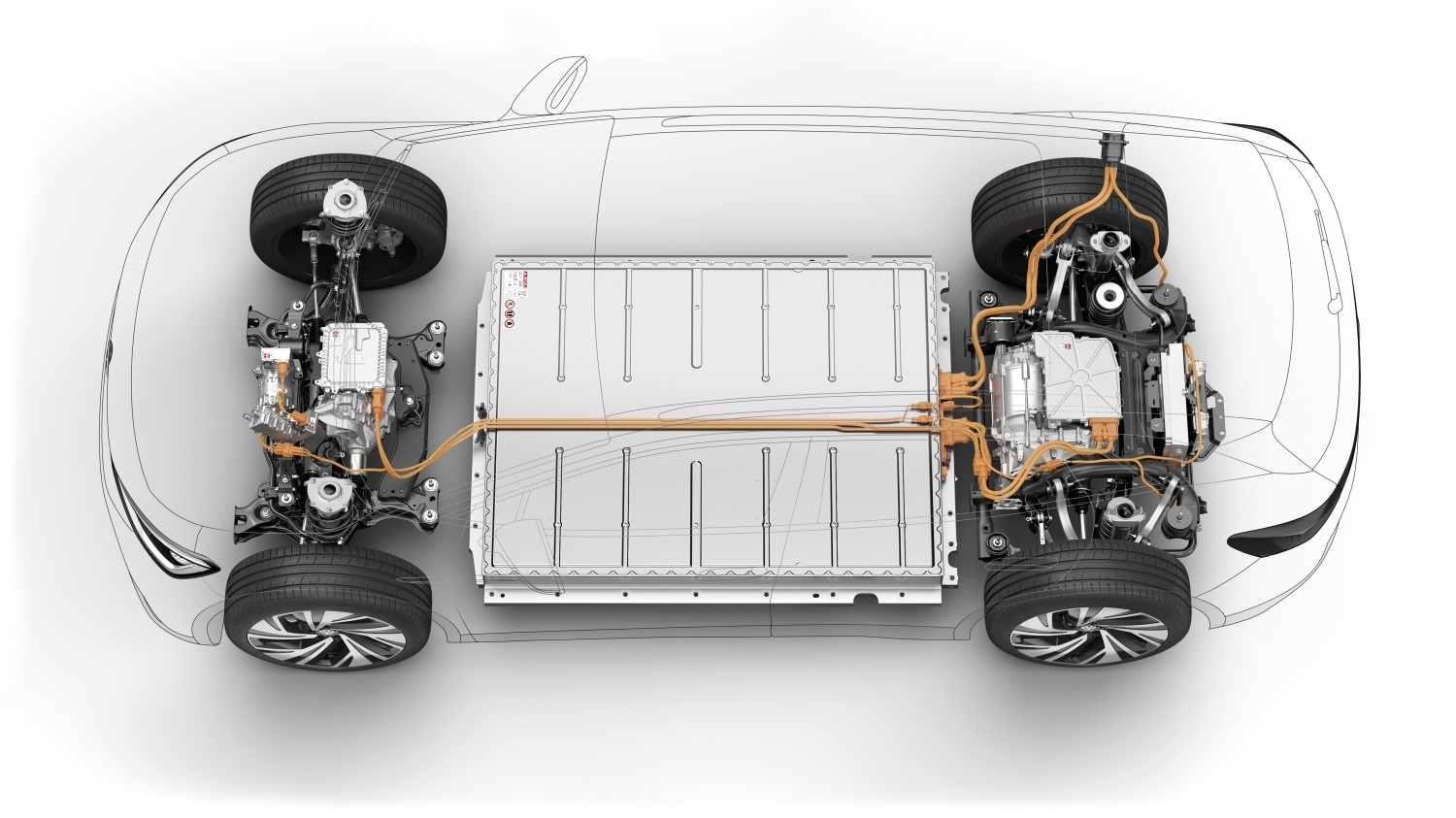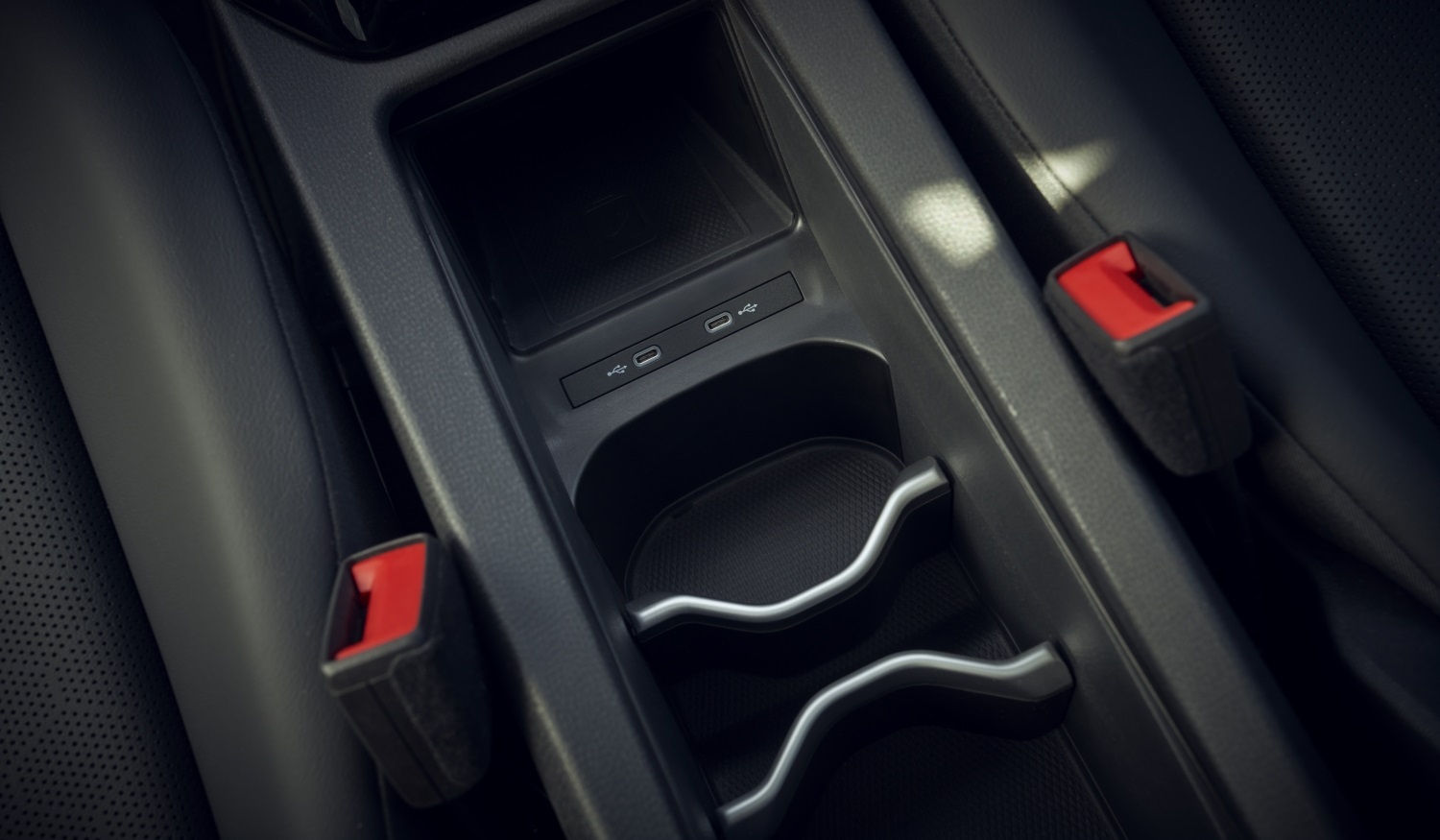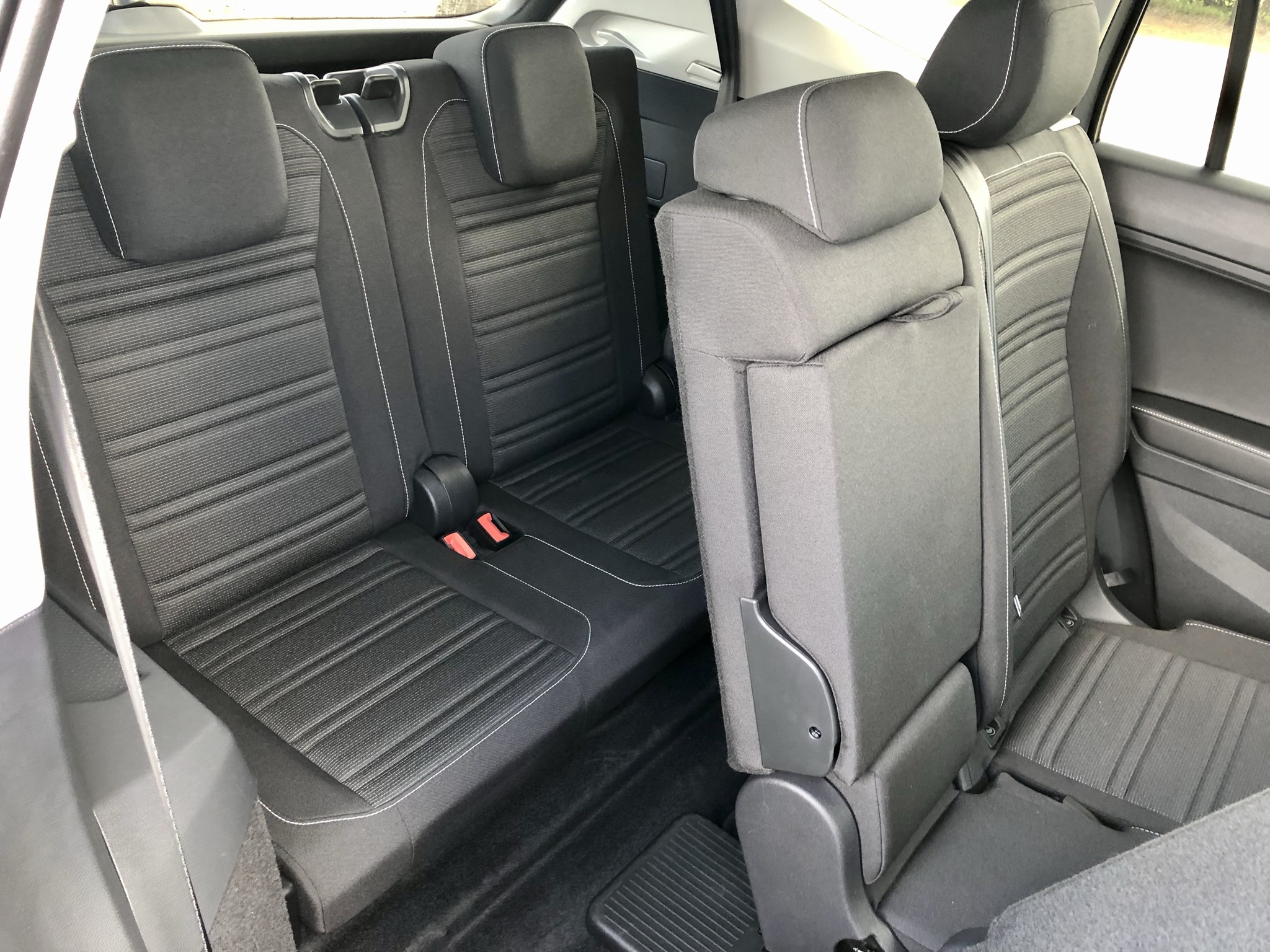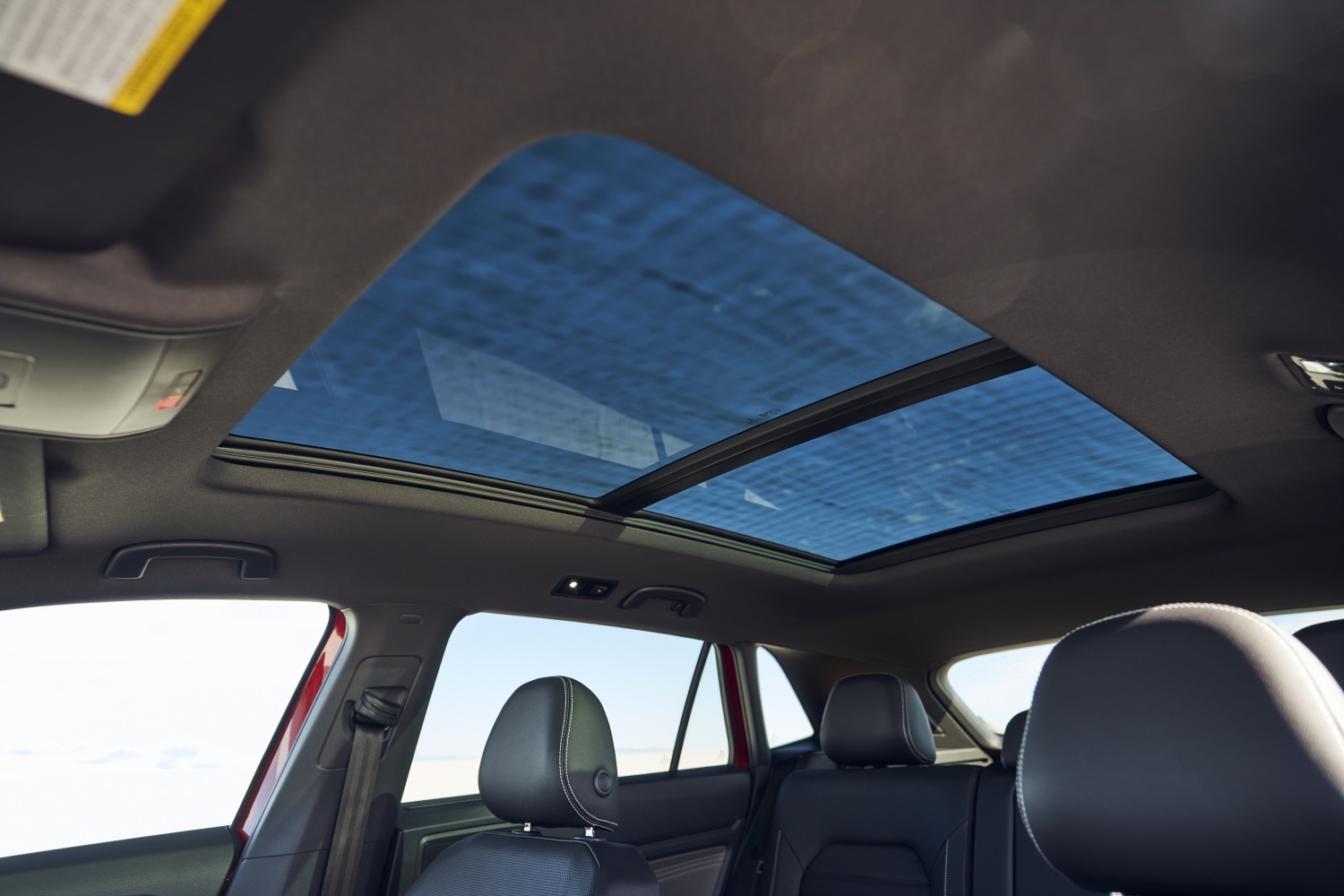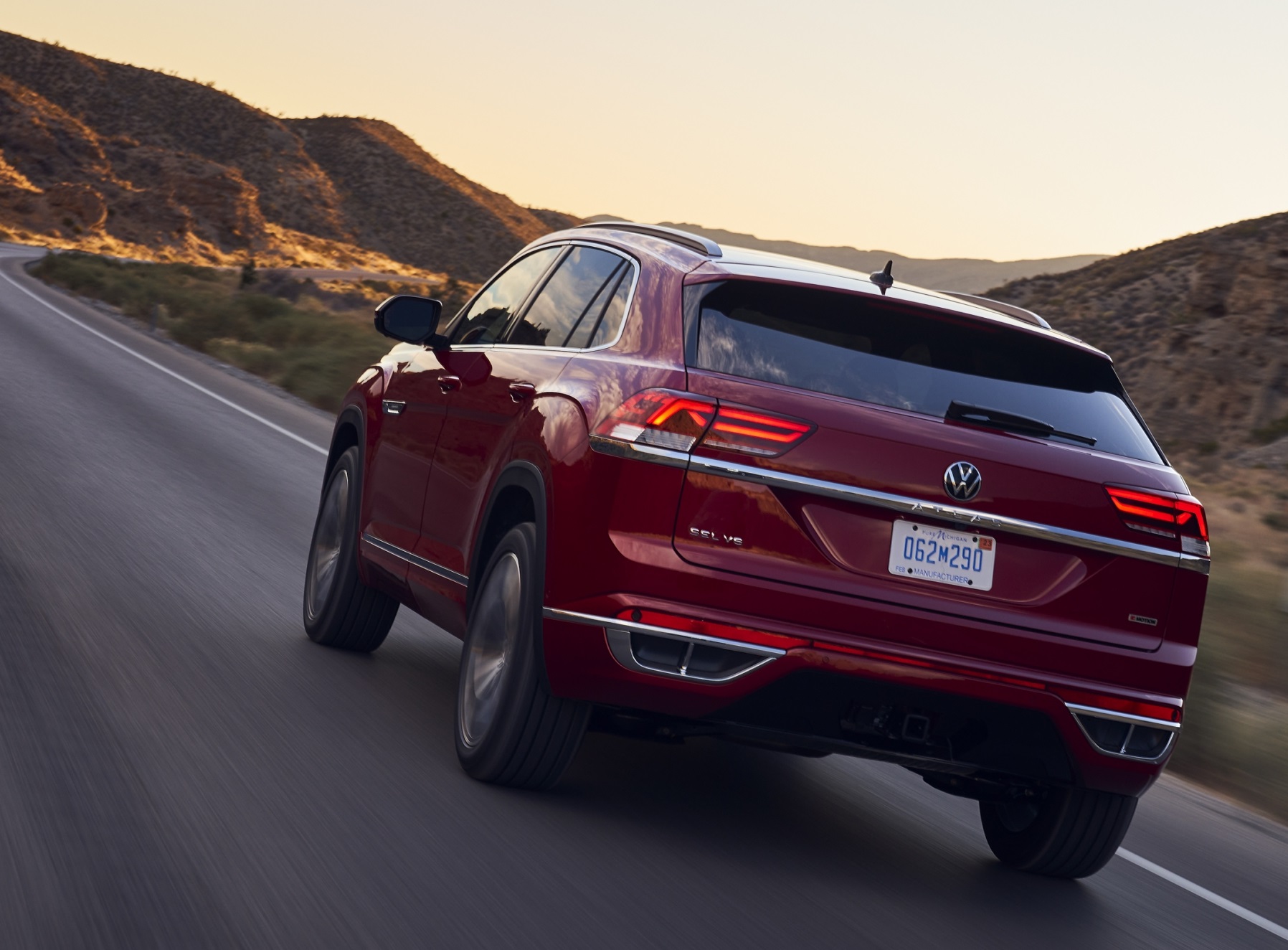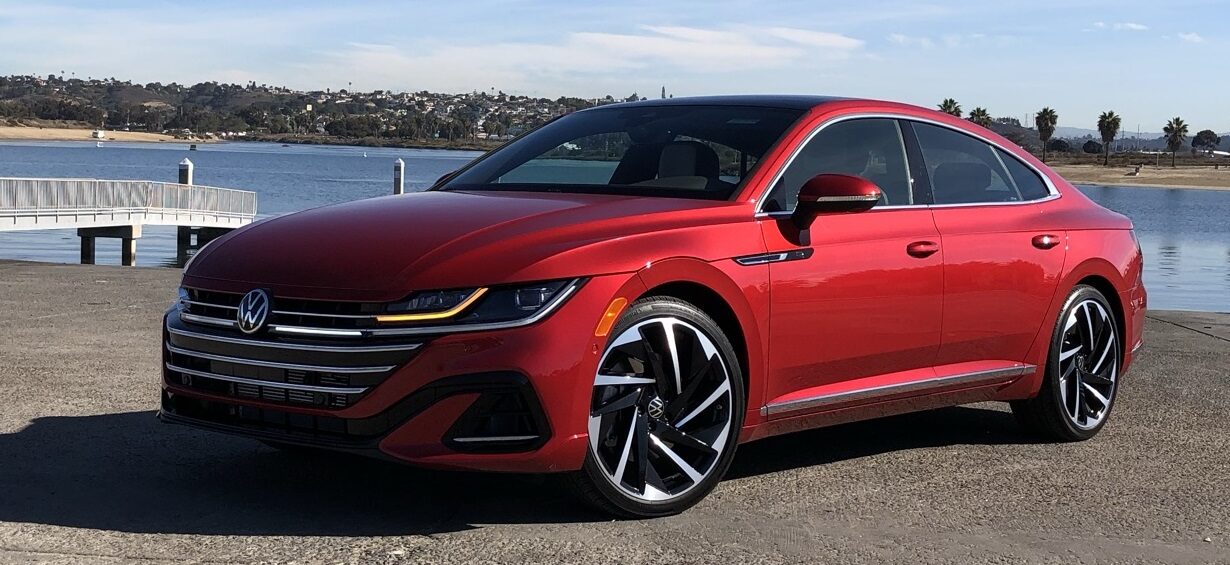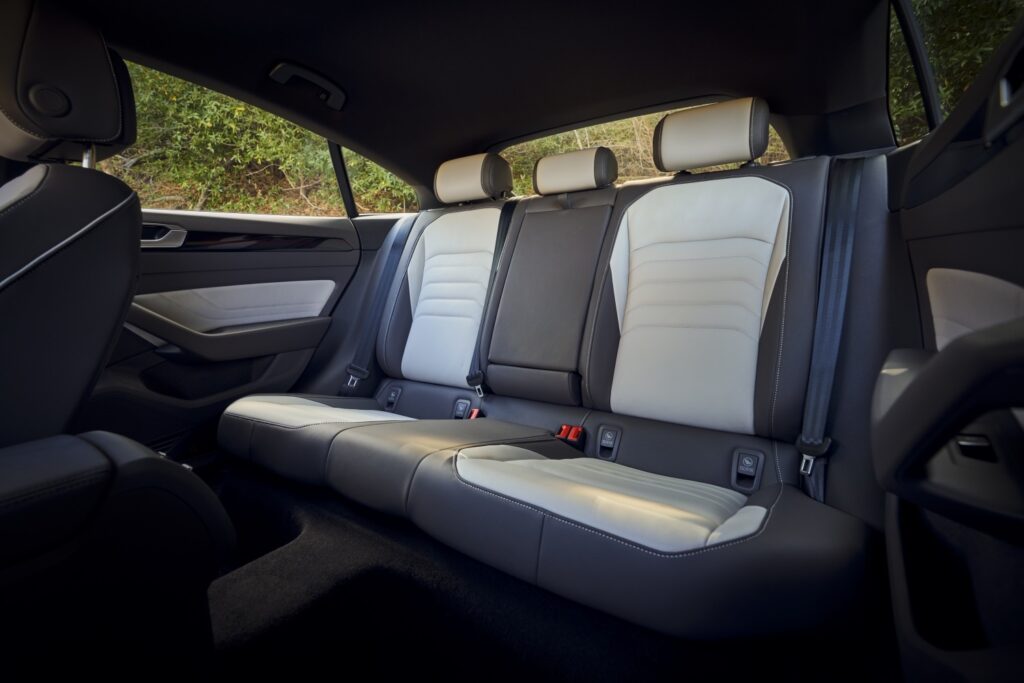2022 Volkswagen Atlas is all about family function and interior space with voluminous cargo capacity

2022 Volkswagen Atlas starting prices range from $35,630 for the front-drive SE with 2.0-liter four-cylinder to $52,800 for the SEL Premium R-Line with 4Motion and 3.6-liter VR6. (Photos by Mark Maynard)
Table of Contents
What’s new for 2022
Pricing
Powertrains
Safety Features
Ride and Handling
Interior Function
What’s New for 2023
Why Buy the VW Atlas VR6?
2022 VW Atlas V6 Specifications
The Volkswagen Atlas SUV has a split personality and two body styles to express itself. The midsize Atlas is Volkswagen’s largest SUV. It debuted for U.S. sales in 2017, and VW has made evolutionary updates ever since. In 2020, VW unveiled the Atlas Cross Sport, a fastback version of the full-bodied Atlas. And last year, the Atlas was given a style freshening that added a new front end (based on the Atlas Cross Sport), redesigned wheels, new rear lights, and a new steering wheel.
Either body style has a choice of two powertrains: a 235-hp, turbocharged 2.0-liter four-cylinder or a non-turbo 276-hp 3.6-liter VR6. All models are available with standard front-wheel drive or optional 4Motion all-wheel drive. Both engines transfer power via an eight-speed Tiptronic automatic transmission.
The Volkswagen Atlas is among at least 11 competing SUVs with three rows and all-wheel drive: Chevrolet Traverse, Ford Explorer, Honda Pilot, Jeep Grand Cherokee, Kia Telluride (and corporate partner Hyundai Palisade), Mazda CX-9, Nissan Pathfinder, Subaru Ascent, and Toyota Highlander.

Standard SEL features include keyless entry and push-button ignition, leather-trimmed upholstery, wireless phone charger, overhead view camera, and Fender audio.
Two Bodies, Two Styles
The Volkswagen Atlas Cross Sport is affordable executive transport and a fastback style statement. The optional back seat captain’s chairs have limo-like comfort with long-reach legroom of 40.4 inches.
The full-body Atlas is all about family function and interior space with voluminous cargo capacity.

The driver seat has 10-way power adjustment.
What’s New About Atlas for 2022
The VW Atlas lineup was streamlined to six trims for the 2022 model year — SE, SE Technology, SEL, SEL R-Line, the new SEL R-Line Black, and SEL Premium R-Line.
The SE model now has an 8-inch Digital Cockpit gauge array. The SE with Technology models add USB-C ports for the third row and a standard trailer hitch for models equipped with the VR6 engine, and there is an option package for 20-inch black wheels.
4Motion is now standard on SEL models, as are machined 20-inch wheels. The R-Line Black package features black 20-inch wheels and black R-Line badging. R-Line is standard on the SEL Premium and adds 21-inch wheels.

A wide, viewable backup camera with guidance lines.
2022 VW Atlas Pricing
VW Atlas starting prices range from $35,630 for the front-drive SE with 2.0-liter four-cylinder to $52,800 for the SEL Premium R-Line with 4Motion and 3.6-liter VR6. Pricing includes the $1,295 freight charge from Chattanooga, Tenn.
Today’s tester is an SEL Premium R-Line 4Motion for $53,890. It had just two options of Aurora Red metallic paint ($395) and second-row captain’s chairs ($695).
Find current VW Atlas pricing here.
And check on available special offers here.

The front passenger seat has eight-way power adjustment.
Atlas Powertrains
The Atlas VR6 is a balance of power and fuel-economy ratings. The direct-injected 3.6-liter has a peak 266 foot-pounds of torque at 3,600 rpm. The power picks up quickly from a start, and then the Tiptronic transmission upshifts quickly to get into fuel-saving gear ratios.
Sport mode sharpens acceleration and shift points, and I used it frequently. Tooling around in Sport mode didn’t seem to affect my average fuel economy all that much. And the force of power was worth sacrificing a few mpgs.
Fellow car critics say the turbocharged 2.0-liter engine will be adequate for most needs. But those who tow will want the V-6.
And there’s not much mileage incentive to go for the four.
The turbocharged 2.0-liter has fuel economy ratings of 21/25/23 mpg city/highway/combined, and the ratings are nearly the same with AWD at 20/24/22 mpg. (Mileage ratings are the same for the Atlas Cross Sport.)
The VR6 has EPA ratings of 18/24/20 mpg front-drive or 17/23/19 mpg AWD. The good news is that both engines use the recommended 87 octane fuel.
I worked up to an average of 17.2 mpg in highway driving, with liberal use of Sport mode.

The 276-hp 3.6-liter VR6 can tow up to 5,000 pounds.
4Motion Active Control
In everyday driving, the 4Motion all-wheel-drive system uses an electronic clutch on the rear axle that lets the rear wheels rotate while the front wheels power the Atlas.
Even when not engaged, the 4Motion system measures the wheel speed multiple times a second, looking for signs of wheel slip. The software responds so quickly that AWD will engage before the front wheels lose traction. The system can direct up to 50 percent of the engine’s power to the rear axle. If an individual wheel begins to slip, electronic stability control can slow it down, sending more power to the wheel on the opposite side with traction.
The Active Control system (available with either engine) has four modes for different surfaces: Onroad for daily driving, Snow, Offroad, and Offroad Custom, which varies engine power, transmission shifts, and other parameters, VW says.

The Digital Cockpit Pro has driver-changeable screen displays.
Atlas Safety Features
Volkswagen loaded up the Atlas with standard safety features, not the least of which are six air bags and engine braking assist. EBA is a safeguard in the event of a hard downshift, which could cause a skid due to the reduced gear ratio and engine compression. Volkswagen’s system uses wheel-speed sensors to monitor the drive wheels for slippage and modulates engine-braking torque to prevent skidding.
Standard on SEL trims, the IQ.DRIVE system is the foundation for Travel Assist, semi-automated driving assistance. The system uses front and rear radar, a front camera, and ultrasound sensors to collect data from the surrounding area.
Semi-autonomous Travel Assist allows hands-on driving assistance from 0 to 95 mph. The system uses adaptive cruise control and lane assist to help to steer, center the vehicle within lane markings, accelerate and brake the vehicle in response to traffic. The steering wheel is embedded with touch-sensitive technology (capacitive) to supervise that the driver’s hands are on the wheel. If not, the system gives an alert and a warning message in the driver-info screen.
Travel Assist gives good lane centering on the interstate. And I appreciated that warnings were few and without a blaring alert. The semi-autonomous function is at its best in heavy commuting traffic, particularly along stretches of construction with narrow lanes. The all-seeing support is reassuring, but always keep both hands on the steering wheel.
Advanced technologies layered into IQ.DRIVE include:
Front Assist (Forward Collision Warning and autonomous emergency braking with pedestrian monitoring);
Active Side Assist (blind-spot monitor);
Rear Traffic Alert;
Adaptive Cruise Control with stop and go;
Lane Assist (lane-keeping system);
Emergency Assist (semi-automated vehicle assistance in a medical emergency).

900-lumen LED headlights turn a few degrees with the steering wheel.
Atlas VR6 4Motion Ride and Handling
There is bullish durability in how solidly the Atlas V-6 feels on the road and yet how deftly it manages the tester’s hefty all-wheel-drive curb weight of 4,605 pounds.
I bonded with the lush rotation of the electric steering and how easily I trolled for mall parking. The official turning circle is 40.5 feet, but it seems much tighter as the big SUV curls easily into parking slots. The wide-screen camera with an overhead view is helpful when parking, but a front view would be beneficial, too.
The Atlas is not quick in its handling, but the steering and suspension allow the Atlas to power through highway exit loops with steady control. The ride quality is comfortable, for a German-engineered SUV, with some bounding over intersection transitions.
Pirelli Scorpion Zero all-season tires have a wide footprint (265/45) and roll quite smoothly. Braking is solid and without grab or nosedive from four-wheel discs; 13.2-inch vented rotors front and 12.2-inch solid rear rotors.

The test vehicle’s 21-inch Pirelli Scorpion Zero all-season tires.
Interior Function
As Volkswagen’s largest SUV, “large” seems to be a design theme for Atlas. Its cabin is a little wider than 5.1 feet, and in between is prime space for generous elbow room and ergonomic placement of controls and conveniences.
There are levels of storage areas, such as nooks, trays, multifunctioning door panels, and a large locking glovebox. An e-bin on the shift console has two charging USB ports and a wireless charging pad. The deep center armrest console hides another USB port.
The SEL Premium cabin is well soundproofed and well stocked with creature comforts and useful electronics. But plain-looking black plastic in lower areas of the cabin detracts from the presence of a $50,000 vehicle.
SEL models include a 10-way power driver seat with lumbar and an eight-way power front passenger seat. And both seats are heated and ventilated. After a couple of hours on the road, the seat bottoms might feel too firm for some.
Front headroom without the sunroof is 41.3 inches or still tall at 40.3 with the big sunroof.
Sightlines are somewhat complicated by large side mirrors and the broad base of the windshield pillars, which are good for roof-crush standards. But the mirrors can block views of vehicles and pedestrians when turning at intersections. Over-the-shoulder views are unimpeded.

The standard panoramic moonroof provides a back seat cinematic experience.
Back Seats and Cargo

Second-row captain’s chairs are a worthwhile $695 upgrade. The third row can be accessed even with child seats in the second row.
Second-row captain’s chairs are a worthwhile $695 upgrade; few will miss that skinny center position on the standard bench. The captain’s chairs recline a few inches and have adjustable-height armrests, which fold when folding the seats. And the seats have an easy tip function for access to the third row.
Legroom in the second row is adult class at 37.6 inches. And there still is accommodating length when the front passenger seat is powered rearward.
- The third row is a kid hangout but well-appointed to keep youngsters quiet and occupied. Legroom of 33.7 inches is an inch or two more than in the three-row competitors. Extras include:
- Overhead lights;
- Cup-can-munchie holders;
- A 12-volt plug;
- Two C-type USBs ports with a phone nook (on the left side).
When not needed, the pair of seats fold flat for cargo capacity of 20.6 cubic feet, stacked to the headliner. Fold both rows of seats for a little more than 7 feet in length.
The cargo opening is wide at 47 inches with an entry height of 33 1/2 inches. The area includes cargo-net hooks, four tie-downs, and side lights. Under the cargo floor is the big Fender speaker and a nifty slot to stow the optional roller cover ($189) when not needed.

Fold both rows of seats for more than 7 feet in cargo length.
What’s New for the 2023 VW Atlas
The 2023 Volkswagen Atlas and Atlas Cross Sport will be in dealerships soon, with just a few changes from 2022. Both body styles will be available in five trims of SE, SE Technology, SEL, SEL R-Line Black, and SEL Premium R-Line. SE Technology models add the 10.25-inch fully configurable Volkswagen Digital Cockpit Pro.
Starting prices were raised modestly for both body styles. The 2023 Atlas SE 2.0-liter starts at $35,895 with front-wheel drive and $37,795 for the SE with 4Motion. The VR6 engine is available on the Atlas SE Technology and above, starting at $41,815 with front-drive and $43,715 with 4Motion AWD. MSRPs include the $1,295 freight charge.
2023 Atlas Cross Sport
Starting prices for the 2023 Atlas Cross Sport 2.0-liter will start at $35,205 for the SE with front-wheel drive and $37,105 for the SE 4Motion. The VR6 engine is available on the Atlas Cross Sport SE Technology models and above; pricing starts at $41,125 for front-drive models and $43,025 with 4Motion. Pricing includes the freight charge of $1,295.
Why Buy the Volkswagen Atlas VR6?
The VW Atlas is an M-word alternative. This durable SUV has almost all the family function of a minivan without the sliding doors, or raised eyebrows from friends.
Volkswagen is transitioning to electric powertrains, but it will take time before a mainstream SUV has the battery performance to haul a 5,000-pound trailer for a road trip.
For those challenged to find available vehicles on dealer lots, a quick check at VW.com showed plenty of Atlas SE models available, whether on the West or East Coast.
A typical disclaimer at nearly all carmaker consumer sites is an advisory such as this at VW.com:
“We’re sorry, availability of some equipment, options or features may be limited due to global supply issues affecting the auto industry. Please continue to build your vehicle and request a quote, but be sure to verify that the vehicle you purchase includes all expected features and equipment.”
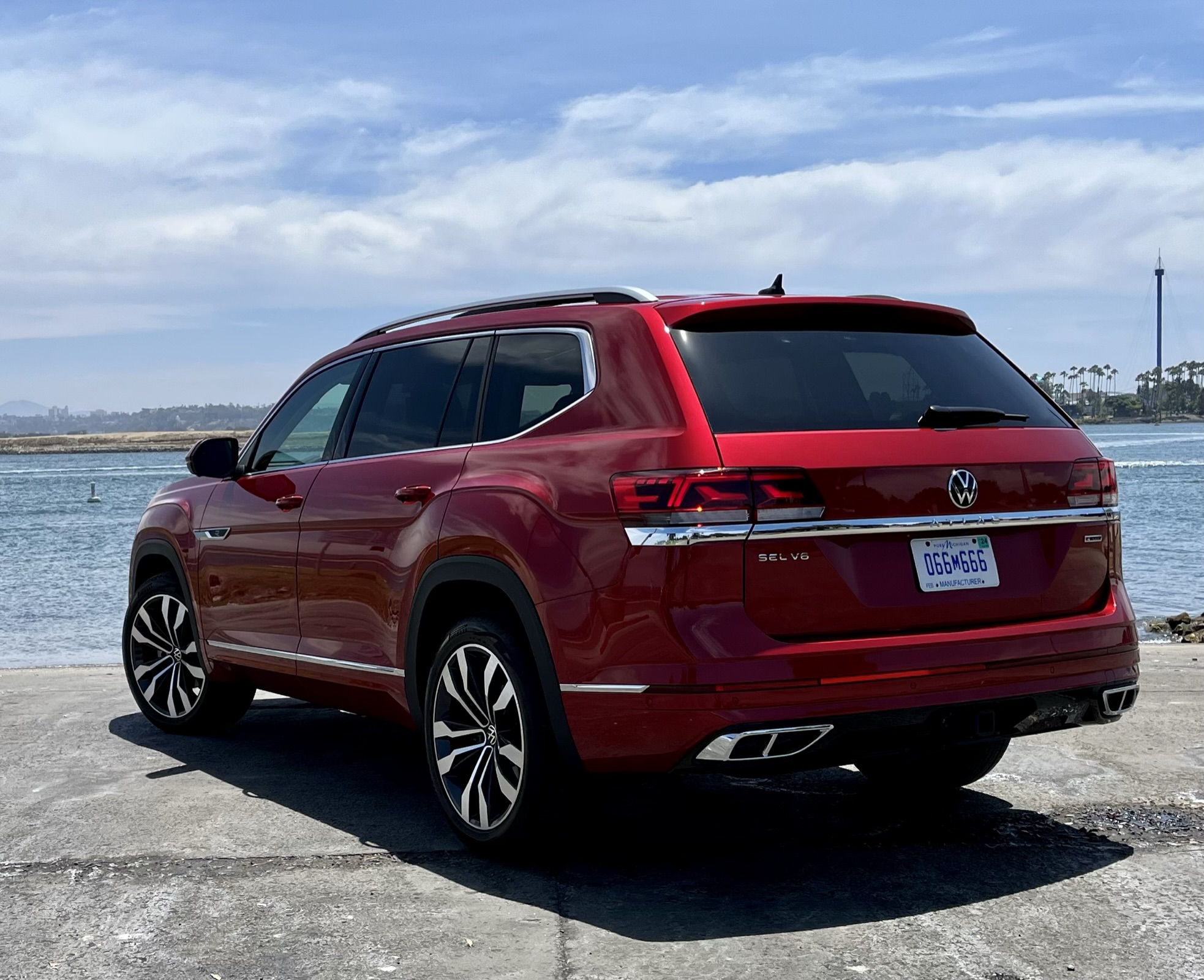
Exterior features of the SEL Premium include a hands-free easy-open liftgate with remote opening and closing, LED taillights, silver roof rails, and a trailer hitch.
2022 Volkswagen Atlas VR6 SEL Premium R-Line Specifications
Body style: midsize, 6- or 7-seat SUV with 4Motion AWD
Engine: 276-hp, DOHC, 24-valve and direct-injected 3.6-liter VR6 with idle stop-start; 266 lb.-ft. torque at 3,600 rpm
Transmission: 8-speed Tiptronic automatic with Sport mode;
4Motion Fuel economy: 17/23/19 mpg city/hwy/combined; 87 octane recommended
BY THE NUMBERS
Towing capacity: 5,000 pounds with braked trailer
Fuel tank: 18.6 gallons
Cargo space: 20.6 to 55.5 cubic feet behind 3rd and 2nd rows
Front head/leg room: 41.3/41.7 inches
2nd-row head/leg room: 40.4/37.6 inches
3rd-row head/leg room: 38.3/33.7 inches
Length/wheelbase: 200.7/117.3 inches
Curb weight: 4,605 pounds
Turning circle: 40.5 feet
FEATURES
Standard SEL Premium exterior equipment includes: all-weather lights with low-speed corner illumination, automatic headlights with arriving/leaving feature, hands-free easy open liftgate with remote opening and closing, heated windshield washer nozzles, 2 front USB-C data ports, 1 center USB-C charging port, 2 rear USB-C charging ports, LED performance headlights with LED daytime running lights and LED taillights, power tilt-slide panoramic sunroof, power heated and power-folding side mirrors with memory, rain-sensing windshield wipers, silver roof rails, trailer hitch with 5,000-pound towing capacity;
Standard SEL Premium interior equipment includes: Keyless entry and push-button ignition, digital cockpit pro (gauge display), wireless phone charger, Bluetooth connectivity for phone and audio streaming, adaptive cruise control, overhead view camera, Discover Media touch-screen navigation system with 8-inch color display (with radio and voice control and travel assist), Fender premium audio system, satellite radio with 3-month trial subscription, App-Connect with wireless capability, leather-trimmed upholstery for 1st and 2nd rows, heated front seats and 2nd-row window seats, ventilated front seats, 10-way power-adjustable driver’s seat with power lumbar and memory preset, auto-dimming rearview mirror, Climatronic 3-zone automatic climate control, ambient lighting and LED interior lighting, a 115-volt power outlet, and remote start;
R-Line equipment includes: R-Line side skirts, front and rear bumper treatments with stylized air intakes at the front and a diffusor in glossy black paint at the rear, 21-inch two-tone matte dark-graphite alloy wheels with 265/45 all-season tires;
Safety features include: 6 air bags, dynamic road sign display, electronic brake force distribution, engine brake assist, adaptive front lighting system, blind-spot monitor, rear traffic alert, forward collision warning and autonomous emergency braking (front assist), park assist, park distance control with maneuver braking, pedestrian monitoring (included in front assist), lane assist, emergency assist, electronic stability control, anti-slip control, electronic differential lock;
PRICING
SEL Premium 4Motion base price: $52,800, including $1,295 freight charge; price as tested $53,890
Options on test vehicle: Aurora Red metallic paint $395 and second-row captain’s chairs $695
Where assembled: Chattanooga, Tenn.
Warranty: 4-years/50,000-miles bumper to bumper and powertrain; free scheduled maintenance for 2 years or 20,000 miles; 3-years/36,000-miles 24-hour roadside assistance




